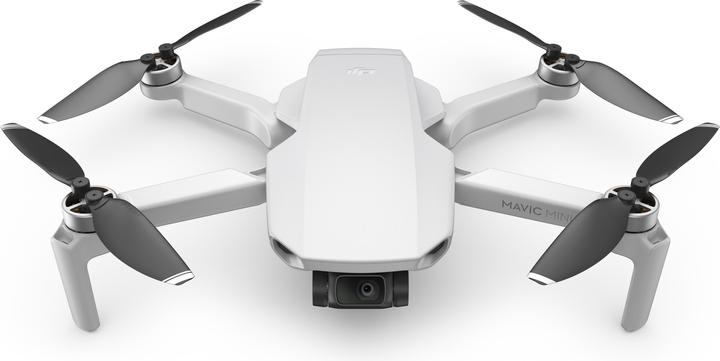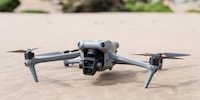

DJI Mavic Mini or DJI Mavic Air 2?
The DJI Mavic Mini and Mavic Air 2 are two ultra-popular drones. The Mini stands out for its price and portability, the Air 2 for its image quality and connectivity.
The DJI Mavic Mini and DJI Mavic Air are both small, lightweight and suitable for beginners. The DJI Mini has been on the market since November 2019, the DJI Mavic Air 2 since May 2020. Both are available in a minimal version as well as a "Fly More Combo" with two spare batteries and other accessories.
Highlights of the Mavic Mini
The advantages are obvious. Firstly the price. The Mini costs less than half as much as the Mavic Air 2, or significantly less depending on price fluctuations. When you're on a tight budget, that's a strong argument.
The other advantage? Its compact size and light weight. It weighs just 249g, less than half that of the Mavic Air 2, which weighs 570g. The Mavic Mini remote control is also much smaller and lighter. My kitchen scale measures 245g and 386g respectively. A second battery in the Mini weighs 100g less. The low weight is an advantage if you're carrying the drone in your backpack for an extended period of time, but not only.
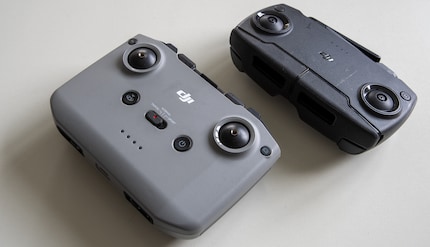
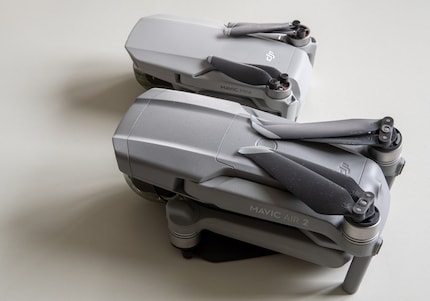
Legal regulations also depend on weight. However, the advantages of the Mavic Mini are not very numerous. Under current legislation, in force until the end of 2020, liability insurance is not required for drones weighing less than 500g, although it is still highly recommended. In the blue control zones of the drone map, you are theoretically allowed to fly more than 150m above the ground without a permit. In practice, however, this is irrelevant, as you will then no longer see the drone, especially as flying out of sight is prohibited.
New rules will apply from 2021; the obligation to register drones weighing less than 250g will be exempted in Switzerland and the EU area, but only if they do not have a camera and microphone. The pilot of a Mavic Mini must therefore also register.
From 2023, restrictions will be quite severe for older drones in the weight class above 250g; the Mavic Mini has a clear advantage in this respect. Older drones, models already on the market, are therefore not classified under the new regulations.
Another small advantage? For the remote control, the smartphone is fixed across its width, allowing the buttons to remain accessible and not be pressed inadvertently. With the Mavic Air 2, the width of the smartphone's edges serves as the attachment point.
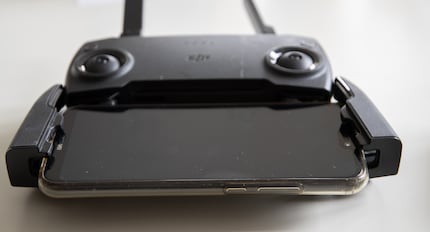
The flight characteristics of the Mavic Mini are acceptable. The battery life of both drones is comparable. The hum of the propellers has a higher frequency on the Mini. Despite its light weight, the gimbal keeps the aircraft stable in windy conditions. However, the Mini's top speed is just under 47 km/h, considerably less than the 68 km/h of the Mavic Air 2.
Highlights of the Mavic Air 2
The Mavic Air 2's camera takes better photos and videos than the Mini. It does a better job of balancing the difference between light and shadow; there are far fewer areas that are too light or too dark. Unlike the Mini, the RAW format is also available for photos. Videos are possible in 4K (Mini: 2.7K) at 60 fps, whereas the Mini only allows 30 fps in the highest resolution. The higher frame rate is important if you've been spinning the drone too fast and want to slow down the camera panning with the editing software.
In my opinion, the most important point is the stability of the connection. The connection between the remote control and the drone on the Mavic Air 2 is reliable even at a distance of several hundred metres. The camera streams the live image in Full HD to the smartphone. The videos stored in this process are so smooth that they can be stitched together. For the video examples in the article on the Air 2, I didn't use the original recordings, but the videos from my mobile phone.
The Mavic Mini is completely different. I couldn't fly the Mini in a circle around the church tower at all, because after a short while the connection stopped. The video streams that land on the mobile phone are only 720p, but are still very jerky; useless for further processing. The Mavic Mini uses a standard Wifi connection, while the Mavic Air 2 uses OcuSync 2.0 transmission technology.
The Mavic Air 2 not only has sensors at the bottom like the Mini, but at the front and rear too. This is the only way obstacle detection is possible. I haven't tested it, because I don't want to take the risk. In any case, the sensors can also be used to track objects. The Mavic Mini can only perform quick shots, i.e. predefined flight movements. And even then, you have to be careful that the drone doesn't end up anywhere.
The Mavic Air 2 is supplied with a charger to charge the drone's battery and remote control at the same time. The Mini must be charged via Micro USB and is not equipped with a charger.
For those who always forget their memory card, Mavic Air 2 has internal memory. You won't get very far with the 8GB, but at least you haven't taken the drone with you in vain. On the other hand, the Mini has neither memory nor cardless recording.
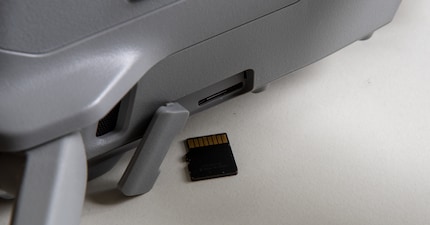
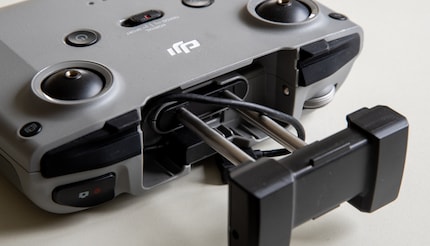
On the Mavic Air 2, the propellers, inserted by a simple click mechanism, can be removed by pushing and turning, and without tools. Practical for damage-free transport. With the Mavic Mini, the propellers have to be screwed in. A screwdriver is supplied.

The Mavic Air 2's remote control, which is much bulkier and can hold the smartphone connection cable, fits perfectly in the hand. That way, it won't get lost or forgotten. Unlike the Mini's, the Air 2's remote control has a speed wheel.
What about the Mavic 2 Pro?
The DJI Mavic 2 Pro is better, bigger and heavier than the Air 2. As it's almost two years old, the price isn't too far off the Mavic Air 2, so it's worth thinking carefully about this purchase. Key features
- One-inch sensor (larger than the Mavic Air 2)
- 20 MP (Mini: 12 MP; Air 2: 12 or 48 MP without dynamic compensation)
- 4K with 30 fps
- Adjustable aperture camera
- Collision-avoidance sensors in all directions
- Much heavier than the Mavic Air 2 (907g)
- Flight time of around half an hour (like the others)
- Other application (DJI Go 4 instead of DJI Fly)
Conclusion: Magic Air 2 better for most
The Mavic Air 2 costs a lot more than the Mini, but stands out in more areas: optimal equipment, a more stable connection and superior image quality. If you can afford it, then it's well worth the money. The Mini is suitable for smaller budgets or those who don't want too much weight to carry when hiking, for example.
Your time horizon also plays a role. Need a drone right away? The Mavic Air 2 is for you. If you want to continue using it in 2023 without major restrictions, that's more of an argument in favour of the Mavic Mini. In that case, I'll wait and see. By then, DJI will most likely produce a better drone weighing less than 250g.
My interest in IT and writing landed me in tech journalism early on (2000). I want to know how we can use technology without being used. Outside of the office, I’m a keen musician who makes up for lacking talent with excessive enthusiasm.
Practical solutions for everyday problems with technology, household hacks and much more.
Show all